SHOP DRY EYE CARE TODAY!
Use code VISIONARYEYE20 at checkout for 20% off!
It’s August, and that means it’s National Children’s Vision Month! Back-to-school season is also here, and there couldn’t be a better time than before your child returns to the classroom to take them to the eye doctor. One out of four school-age children suffer from some type of uncorrected vision problem, which can seriously impair their success in the classroom. Children are not always able to recognize by themselves that blurry vision or struggling to see near or far is actually a concern. And vision problems aren’t always issues with blurry vision, but rather eye alignment and focusing issues that lead to struggles in school, despite the fact they can see the classroom board clearly.
A routine school eye screening by an optometrist is necessary to detect vision problems and maintain overall optical health. You may have believed a school or pediatrician vision screening is enough. These are brief exams that evaluate visual acuity, the ability to read small letters or see a picture on a chart. These screenings are not comprehensive and can’t evaluate the way your child’s eyes work while reading or doing school work, nor can they adequately evaluate your child’s eye health. This means many vision problems aren’t detected, contributing to your child struggling in their academics or athletics.

According to the American Academy of Ophthalmology, it’s recommended that children receive an eye evaluation once before the age of 3, and at least every one to two years until the age of 19. Preschoolers should see a pediatric optometrist to ensure their eyes are aligned and focusing properly to address developing issues and halt progress down the road. During adolescence, a person’s eyesight can change rapidly and often, especially impacted by puberty, so they should continue to receive annual checkups. Of added importance, detecting myopia early is key as we now have FDA-approved technologies like the MiSight lens to slow the progression of near-sightedness or myopia. So we can now actually do something about your child’s prescription getting worse every year using myopia control techniques.
Scheduling an eye exam with your child’s optometrist before school begins will ensure they start the school year with the best overall vision to succeed! It eliminates the concern that vision or eye health could be interfering with your child achieving their highest academic potential. Proper eyesight can also prevent headaches, fatigue, and lack of focus in the classroom. You should also have your child’s lens prescription checked and kept up-to-date, especially if they are active in team sports or have a new classroom seat each year. Being proactive in ensuring your child regularly visits an optometrist is essential. After all, they own their eyes for life!
Just like with the rest of your body, age can have drastic effects on your eyesight. One of the most common age-related eye conditions out there is cataracts. You may be asking yourself, “what are cataracts?” and you’re not alone. Though many people have heard of cataracts, they’re less informed about the types, symptoms, and treatment of them. Considering how common cataracts are, it’s likely that you or a loved one may be affected by the eye condition if you don’t take the proper precautions. Take a look below to learn all you need to know about cataracts and see what you can do to protect yourself from developing this condition.
 What Are Cataracts?
What Are Cataracts?Cataracts are described as clouding of a normally clear eye lens. They affect the natural lens of your eye which leads to impaired vision and other sight complications. Typically, cataracts affect older patients over the age of 60 and are most noticeable in dim lighting. Fortunately, cataracts do form slowly and can be treated.
Though the cause of cataracts has not yet been fully determined, it’s understood that they form when proteins build up in the lens, making it appear cloudy. The cloudiness prevents light from passing through the lens clearly resulting in vision impairment. There may be several causes of cataracts, but generally, age, exposure to sunlight, and eye trauma are the biggest contributors.
The main symptom of cataracts is the inability to see clearly. Cataracts cause light to be blocked by the natural lens impairing your vision. Other signs and symptoms of cataracts include:
There are several types of cataracts including cortical, posterior subcapsular, and nuclear sclerotic cataracts.
Nuclear sclerotic cataracts are the most common and it’s very typical for people to develop them in their late age. This type of cataract forms in the center of the lens also called the nucleus. You may notice your vision improve for a brief amount of time when developing nuclear sclerotic cataracts but these effects do not last. Over time, your lens will begin to harden and become yellow or brown in color. It makes seeing small details almost impossible, dulls colors, and may result in seeing halos forming around objects.
Cortical cataracts are common in diabetes patients. These cataracts develop opposite from the nucleus, starting at the outer layer of the eye rather than the center. As it progresses, it creates noticeable spokes that lead from the outside in. A unique symptom of this type of cataract is experiencing changes in both contrast and depth perception.
Posterior Subcapsular cataracts develop much quicker than other types of cataracts, typically over months rather than years. Posterior cataracts start at the back of the lens and are most common in diabetes patients or those with extreme nearsightedness. Steroid use can also increase the risk of developing posterior subcapsular cataracts. With posterior subcapsular cataracts, you will first notice changes in your night vision and may also notice more difficulty reading.
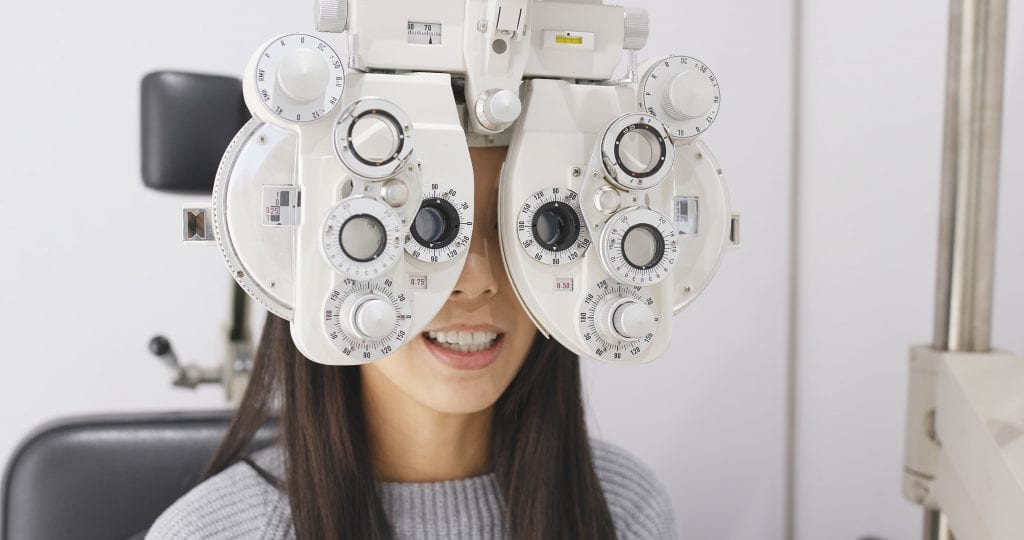
The good news is that cataracts are easily treatable by medical and eye professionals. If you catch the condition early enough, a stronger prescription lens can improve your vision for some time. Typically, increasing your light source will also help vision in patients with cataracts, so be sure to add light to your home and use your new prescription glasses or contact lenses.
If these no longer work for you, then cataract surgery is going to be necessary. Cataract surgery is the only way to remove the cataract and fully treat it. There are several kinds of operations for cataracts, but they all require your surgeon to take out the cloudy lens and replace it with an artificial one. The surgery usually takes about 15 to 20 minutes, and you don't need to stay overnight in a hospital. If you have cataracts in both eyes, your doctor will wait until your first eye heals before they perform surgery on the second. More than 95% of people who have this done say they can see better afterward.
While there is no surefire way to prevent the onset of cataracts, there are some precautions you can take to limit your risk of developing cataracts. With risk factors such as increasing age and previous trauma or injury, there’s little you can do to keep eye problems from worsening. However, other risk factors can affect this as well. Some of them include:
In order to prevent cataracts from forming, try making some life changes such as:
Cataracts are the leading cause of blindness worldwide, though in the United States access to cataract surgery is readily available, so most Americans, fortunately, do not need to live with vision impairment from cataracts for very long. Should your condition require more advanced medical care, we work with many of the area's best specialty surgeons to co-manage any problems you may develop.
If you’re struggling with complications caused by cataracts or are just starting to develop cataracts, contact the Visionary Eye Center today! Here, we strive for customized eye care solutions for our Reno-Sparks patients and are eager to help you gain back control of your vision.
Vision problems can be a huge distraction in your daily life, making even casual tasks such as driving extremely difficult. One common vision problem that patients may experience is night blindness. You may be asking yourself, "what is night blindness?" and you're not alone. Someone with night blindness will have difficulty seeing in dark environments, which is especially noticeable when driving at night. Night blindness can be dangerous in some situations, so it’s critical that you get the help you need to alleviate your symptoms and get your eye health back on track.
For more information about night blindness, read the article below or contact our Reno optometrists today.
 What is night blindness?
What is night blindness?Night blindness, professionally known as nyctalopia, affects your ability to see at night or in poor lighting conditions. Although many people believe night blindness is an eye condition/disease all of its own, this actually isn’t true. Night blindness is the result of an underlying health issue such as cataracts, diabetes, or myopia. It’s also important to note that night blindness does not result in actual blindness but does lead to impaired vision in dark environments.
Night blindness often presents itself when transitioning from a well-lit area to a dark, poorly-lit environment. Our eyes naturally adjust and adapt to changes in light, but those with nyctalopia are typically unable to do this, resulting in poor visibility. If you have difficulty driving at night due to lousy vision or struggle to see in dark restaurants, movie theaters, etc., then you likely suffer from night blindness. However, many types of night blindness are treatable and symptoms often subside once the underlying issue has been resolved.
There are several possible causes of night blindness including:
 Symptoms:
Symptoms:The most common symptom of night blindness is experiencing poor vision in dimly lit or dark environments. However, this isn’t the only symptom that may present itself in those with nyctalopia. Other symptoms include:
Not all forms of night blindness can be treated, but a majority of them can be managed or remedied in some way. The treatment for your night blindness will vary depending on the cause of your condition. For example, if your night blindness is caused by myopia or nearsightedness, then new glasses or contact lens prescription may be recommended to alleviate your symptoms. And if your night blindness is caused by cataracts, surgery may be the only option for relief.
Other night blindness treatments may include a change in glaucoma medication or a visit with a retinal specialist. To determine your best course of action, it’s essential to visit your Reno eye doctor. They’ll be able to diagnose the cause of your night blindness and will provide the best treatment plan based specifically on your needs.
 See how you can prevent night blindness
See how you can prevent night blindnessAlthough some night blindness may be the result of a genetic disposition, other forms of nyctalopia may be prevented with some simple lifestyle changes. Try making these easy changes in your everyday life to help prevent the onset of night blindness:
Here, at the Visionary Eye Center, we strive for customized eye care solutions for all of our patients in the Reno-Sparks area. As each patients’ needs are unique, your treatment plan should be unique to you as well. We’ll work with you to determine the underlying cause of your night blindness to develop a solution that addresses your symptoms and treats your vision problems.
Our office uses the latest diagnostic technology and treatment solutions so you can receive cutting-edge options and not the bulk products that are found in other optometrists’ offices. Contact us today to get started with your personalized eye treatment. We look forward to meeting you!
Children and infants aren’t exempt from experiencing vision problems. Like adults, children can suffer from a variety of eye conditions including amblyopia, strabismus, and refractive errors such as nearsightedness and farsightedness. Genetic diseases such as glaucoma and cataracts may also affect children at a very young age. Thankfully, with regular vision checks, your child’s eyesight difficulties can be detected and treated early on. Start by learning the signs of vision problems in babies and children so you and your pediatrician can refer to an optometrist and rectify the situation before it gets out of control.

Eye exams should be done by your optometrist regularly. Unfortunately, pediatrician screenings aren’t designed to detect the subtle signs of early disease or vision problems. So, just like it is important to have your child see the dentist early, so too is it important to bring your child to an eye care professional at the following ages even if nothing seems wrong:
All children who wear glasses should have their vision checked yearly at their annual checkups. At these appointments, it will be determined how the vision problems are progressing and new glasses or contact lenses will be prescribed if necessary.

Vision problems may appear at any point in a child’s life. Many of the signs of vision problems in babies and children will be easy to spot, but some may go unnoticed if not closely monitored. If you notice any of the following signs or symptoms in your child, be sure to connect with your optometrist to see if further action should be taken:
Some vision problems may have no symptoms at all. Commonly, amblyopia (lazy eye) provides no obvious warning signs, which is why it’s so important to have your child’s eyes checked regularly. Tests can be done to determine if an eye condition is present or developing. Catching these signs early on is critical as it can help prevent your child from suffering chronic vision problems.
If you are concerned about your child’s eye health, or if you’re still wondering what are the warning signs of vision problems in babies and children, don’t hesitate to schedule them an appointment with an optometrist. Here at the Visionary Eye Center, we are equipped to offer pediatric eye care with the best options, treatment, and technology available.
We have developed techniques and technology specifically for children of all ages. When it comes to your child’s eye health, being proactive is essential. Feel free to contact us with any questions or concerns about your child’s vision, and don’t hesitate to schedule an appointment with us today! Visionary Eye Center is your home for custom vision solutions, and we take pride in offering top-tier care for each patient.
As a child’s health is the number one priority to parents, surprisingly many are inattentive to the importance of eye health. Eyesight issues can impact a child’s life in every fashion of ordinary life from school to sports and socializing. Children cannot always vocalize exactly what’s wrong, and a lot of times it’s hard for them to even realize.
You may be asking yourself, “Does my child really need glasses?” Healthy eyesight is crucial to a child’s well-being, so in this blog we will explore some of the most common signs to tell if your child really needs glasses or not.
Before we get into signs of possible eye issues, the most important thing is to make sure your child goes in for frequent checkups. Oftentimes, kids are only taken in occasionally if there is nothing wrong the first time, but doctors recommend children should be seeing an eye doctor at least once a year.
Many schools perform a regular vision screening, but miss 75% of children with vision problems. The screening performed by your pediatrician using a picture chart tacked to the wall is similarly inadequate. If your child fails a school or pediatrician vision screening make sure to bring them in immediately for a comprehensive eye exam. Eye exams by an optometrist are really the only foolproof way for a true diagnosis, and it often these vision issues will continue to worsen if you don’t stay proactive about the situation.
1) Squinting
Squinting compensates for your eyes’ inability to clearly see an object by reducing misfocused light. If you notice your child has a tendency to squint while looking at far away objects (nearsightedness) or squinting while looking at close up objects (farsightedness), it may be time for a checkup.
2) Tilting of the head
If you see your child continuously tilting their head, especially if you notice they are attempting to strain their vision, it could be an attempt to increase vision clarity by changing their sight angle. This could be a sign that their eyes are misaligned or an imbalance of the eye muscles.
3) Sitting too close
It could seem like a natural child thing to do to sit too close to the TV or hold devices or books close up to their face, but it could be a sign of nearsightedness or myopia development. Nearsightedness affects your vision where one can see more clearly when the object is closer, and it is one of the most common vision problems for children around the world.

4) Struggling in school
If you notice your child is struggling in school or with school work, it could be a number of different things which makes it so much more important to stay informed about your child's performance in school. For a young child, school is very stimulating, and they are forced to adapt quickly, including their eyes. Vision problems can lead to a lack of focus or motivation for school work.
5) Headaches, migraines, nausea or eye pain
If your child is suffering from any of these symptoms it could be a number of different things, so just remember to listen to your children and continue to stay proactive. These symptoms could be a result of strain from the extra effort that your child must put forth if they are experiencing vision problems. This tension may cause frequent headaches or eye pain, or in more severe cases migraines and nausea could be present.
6) Covering one eye
Similar to tilting the head, covering one eye while reading, watching TV or any eye strain, can be an attempt to compensate for double vision. It could also be a sign of sensitivity to bright light (exotropia) or lazy eye (amblyopia).
7) Excessive eye rubbing
Eye rubbing is a pretty natural tendency, but it is important to monitor your child’s habits. If they are rubbing their eyes on a regular basis or during strenuous eye activity like reading or watching TV, it could be a sign of digital eye strain, dry eye or allergic conjunctivitis.
If you are concerned about your child’s eye health, or if you’re still asking yourself, “Does my child really need glasses?” you should immediately schedule them an appointment with an optometrist. Here at the Visionary Eye Center we are equipped to offer pediatric eye care with the best options, treatment and technology.
We have developed techniques and technology specifically designed for children where many other optometrists are not capable of seeing very young children. Feel free to contact us with any questions or concerns about your child’s vision, and don’t hesitate to schedule an appointment today!
As your eye continuously changes, your brain adapts and makes compromises with these changes, making it hard to tell if your vision is deteriorating. Based on many factors—including age, health, family medical history and personal medical history—the importance of yearly eye exams differs, but we urge you to visit an optometrist at least once a year.
As your eyes are the window to your soul, they are also the window to your overall well-being where other health issues come to light. For this blog, we will explore the importance of yearly eye exams, as well as other factors surrounding the topic.
Prevention: Even if you are healthy—or you think you are healthy—prevention is the key to lasting eyesight. Vision impairment can be avoided or prevented if you are able to catch signs early on. Especially with rising numbers of Digital Eye Strain from increasing screen time from work and school; it’s more important now than ever to get in to see your eye doctor.
Your vision changes over time: Vision changes occur naturally, but it’s nothing to be afraid of. However, these changes can and will affect your vision on a daily basis, and only an optometrist will be able to tell you exactly how these changes are affecting your vision. If these changes aren’t monitored or taken care of, you could be facing irreparable damage.
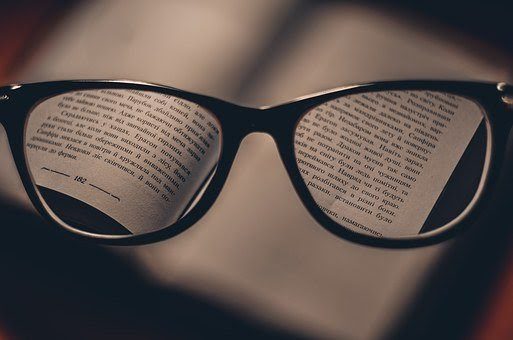
In addition, it’s especially important to visit an eye doctor yearly if you already wear glasses or contacts. You could need adjustments after a period of time, and your prescription could change from your previous visit. An out-of-date prescription poses just as much of a threat as non-wearers letting their eyesight deteriorate.
Your eyes show other health issues: As mentioned formerly, your eyes tell a tremendous amount about your overall health. Your eyes can show signs of diabetes, brain tumors, high cholesterol and high blood pressure by looking at blood vessels, arteries and cranial nerves while your eyes are dilated. These signs will show in your eyes before visible symptoms anywhere else.
Symptomless eye diseases: There are common eye diseases that show no or limited symptoms until the effects are truly upon you and create irreversible damage. By looking at the optic nerve and the condition of the cornea an optometrist can see signs of eye diseases like glaucoma, dry eye and anterior segment diseases.
For a thorough routine eye exam one should expect the following:
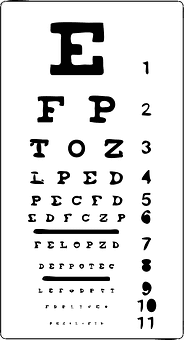
With our cutting edge diagnostic technology, Visionary Eye Center is offering a Digital Lifestyle Exam that’s perfect for all ages! With this revolutionary eye exam you can spend more time talking face to face with an optometrist on a plan for your eyes rather than staring through a machine.
With this eye exam you can expect:
You can check out everything it has to offer here!
Here, at the Visionary Eye Center, we strive for customized eye care solutions for our Reno-Sparks patients. As each patients’ needs are unique, our treatment should be as unique as you.
Our independence allows us the flexibility to use the latest technology, so you can receive cutting edge options and not bulk products that are found everywhere. Contact us today to get started with your personalized eye treatment today. We look forward to meeting you!
In this age of rapid technological advancement, the issue of health is usually brought into the equation with it. These days almost every child, teen, and adult has a number of phones, tablets, and laptops to choose from on any given day. The exponential increase in screen time has led to concerns about light emission from these screens and the health implications they have on the user, specifically blue light.
One of the most popular ways of combating this issue is glasses that block blue light from the user’s eyes. However, recent evidence suggests that blue light may not be the culprit to eye issues and digital eye strain (DES), and the truth about blue light glasses is slowly being revealed.

While it may not be extremely crucial that you understand everything about blue light, it is helpful to have a little background information on the subject. Blue light is found naturally through sunlight, and it is also present in general lighting and electronic displays. Sunlight emits 100,000 lux while general lighting only emits approximately 50-70 lux, so a long day in the sun with no protection can be much more harmful than a couple hours on your phone. On the light spectrum, blue light is almost indistinguishable to the invisible ultraviolet rays which is one of the reasons why there are mixed findings about the effects of blue light.
Blue light can be helpful or harmful depending on the where, what and how of the situation. For example—because blue light suppresses melatonin in your body—prolonged use of your phone, especially before bed, can cause difficulty sleeping and disrupt your circadian rhythm. But, if you were to take a walk during your break from your job, the sunlight can make you come back feeling alert and awake.

Blue light glasses have specially crafted lenses that block or filter out blue light. They are available both with and without a prescription. The manufacturers claim they protect from glare and can help reduce damage to your eyes from prolonged exposure to blue light.
According to this study, 40-60% of people experience eye symptoms from prolonged use of electronic displays. These symptoms have been coined as digital eye strain (DES) including eye fatigue, ocular irritation, burning, eye strain, redness, dryness, blurred and double vision.
It had long been speculated that blue light was the main cause of DES, and to combat the issues there was a huge marketing push for blue light glasses. They were received well by the public because technology is now so ingrained in our society. Advertised benefits of the glasses include less eye strain, improved sleeping and prevention of eye disease. But is this the full truth about blue light glasses?
According to this same study, there is minimal evidence to support the theory of blue light causing DES symptoms and blue light lenses as a clinical treatment for DES. However, they have been proven to reduce symptoms for certain people, so keep using them if they make you feel better.
"Two studies from our laboratory do not support the proposal that DES symptoms are associated with exposure to visible blue light. In the first investigation, we compared symptoms after sustained reading from a tablet computer.26 The screen was covered either with a filter that blocked more than 99% of blue light or an equiluminant, neutral-density filter (Figure 1). We observed no significant difference in post-task symptoms between the two conditions (Figure 2). The study does have some limitations, as it was not performed on a double-blind basis, and most commercially available filters only block between 10% and 20% of blue light, rather than the 99% level tested here.27 " (excerpt from https://www.reviewofoptometry.com/article/living-with-blue-light-exposure)
Moreover, these findings have shown that there are a plethora of factors that contribute to DES. It is important to manage other elements that can have a more collectively positive effect such as optimal environment for screen viewing, proximity to the screen, amount of time and when.
Here at Visionary Eye Center, we understand the importance of information. An educated patient can make the best decisions for themselves or families, and we are here to help every step of the way. Our site is filled with information. Also, be sure to check out our Facebook and Instagram for our latest tips. We look forward to meeting you! Contact us today.
Myopia is the condition that is commonly referred to as nearsightedness, and recent studies have revealed that it is becoming increasingly common in children. Myopia is caused by the lengthening of the eye from front to back, and consequently, light is focused in front of the retina and not directly on it—causing far-away objects to be blurry. Myopia progresses quickly in children if not treated, but there are now multiple myopia control options that can slow down or the progression.
So you may be asking yourself what exactly is myopia control? It is the use of treatments, medicines, eyeglasses, and contacts to reduce the progression and risk of eye disease from myopia.
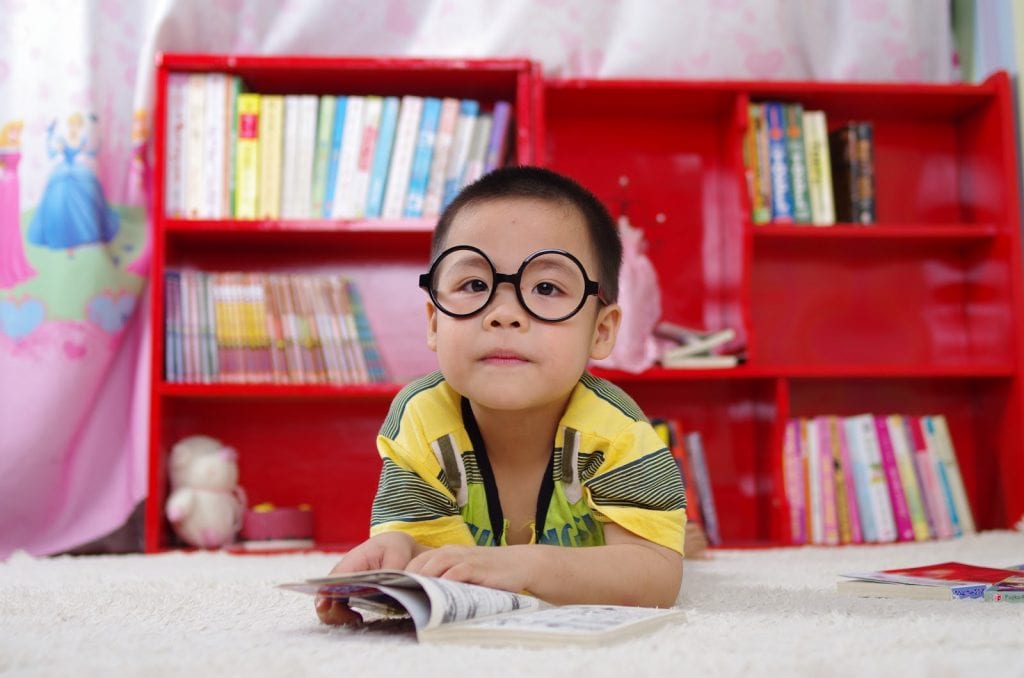 The most crucial aspect of myopia control is being proactive. This means communicating early and often with your eye doctor. Later complications from myopia can include serious, even life-threatening, complications such as glaucoma, cataracts, retinal detachment leading to blindness.
The most crucial aspect of myopia control is being proactive. This means communicating early and often with your eye doctor. Later complications from myopia can include serious, even life-threatening, complications such as glaucoma, cataracts, retinal detachment leading to blindness.
In regards to children—because they are still growing—even if they aren’t experiencing eyesight problems, it’s important to take them in regularly to get their eyes checked. There is a much greater chance of success with the myopia control options if you are proactive and aware.
Experts say that adults and children should be getting at least 2 hours of sunlight per day to reduce the chance of myopia onset. Studies are inconclusive at this time whether this prevention technique helps slow progression in children that already are myopic.
The best thing to do to start is getting with your optometrist to create a personalized treatment plan. The most common myopia control options are atropine eye drops, multifocal contacts, orthokeratology (Ortho-k), and special types of glasses.
Atropine eye drops: As more and more people are being diagnosed with myopia, atropine eye drops have come out as one of the most effective control options. Multiple studies have shown the higher the dose of atropine the better the control. Atropine in higher doses dilates the pupil, but studies have also shown very low dosages (.01-0.05%) can effectively slow myopic progression without bothersome side effects.
The use of a low dosage drop—used usually before bed—has shown to substantially slow the effects of myopia in children compared to those who don’t.
Multifocal contacts: Multifocal contact lenses have also been proven to be effective. The FDA even recently approved the MiSight 1 day for myopia control, the first soft contact lens to carry such designation. This option can be used as a sole treatment or in combination with low dose atropine.
Bifocal Glasses: Lined bifocals have been shown to slow myopia correction by a small but meaningful amount. If your child is hesitant about eye drop and contact lens options this is a great alternative to get them started on myopia control therapy.
Orthokeratology (Ortho-k): Ortho-k has been at the forefront of myopia control options for many years. They are a set of gas permeable contacts worn at night that gradually reshape your eye, eliminating the need for daytime glasses or contacts as well as slowing the progression of myopia.
This control option is becoming increasingly popular because it is a non-surgical alternative to LASIK.
The prevalence of myopia has increased dramatically in the United States over the last 50 years, with almost 40% of the US population being nearsighted today, compared to just 25% in the 1970s. While genetics play a key role in many patients, environmental aspects like increased time indoors and increased levels of near work have also been implicated in this dramatic rise. As myopia can occur even in children with no family history, it is imperative to talk with your child and see your optometrist often.
Myopia studies are increasing, but doctors are unable to offer a foolproof explanation of who will or will not develop myopia or significant myopic progression.
 Factors include increased screen time, decreased time outdoors, and long periods of near work like reading. Studies have also shown that the under-correction of myopia in eyeglasses or contacts may contribute to myopia progression.
Factors include increased screen time, decreased time outdoors, and long periods of near work like reading. Studies have also shown that the under-correction of myopia in eyeglasses or contacts may contribute to myopia progression.
As technology becomes increasingly integrated into our everyday lives, it is also posing health risks. While the evidence is not clear cut, many doctors agree that there is a correlation between screen time and the increased prevalence of myopia.
A study from the Singapore Eye Research Institute concludes that since the introduction of smartphones and tablets there has been a rise in myopia, but the results are “mixed.”
Visionary Eye Center strives to provide all of our patients with custom eye care and the knowledge to make the best decisions for their care. To learn more about our Reno myopia control services, contact us to get started!
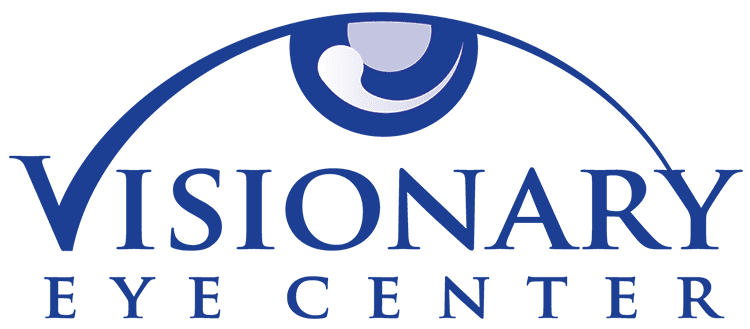 775.827.1100info@visionaryeyecenter.com8175 South Virginia Street Suite B-900
775.827.1100info@visionaryeyecenter.com8175 South Virginia Street Suite B-900